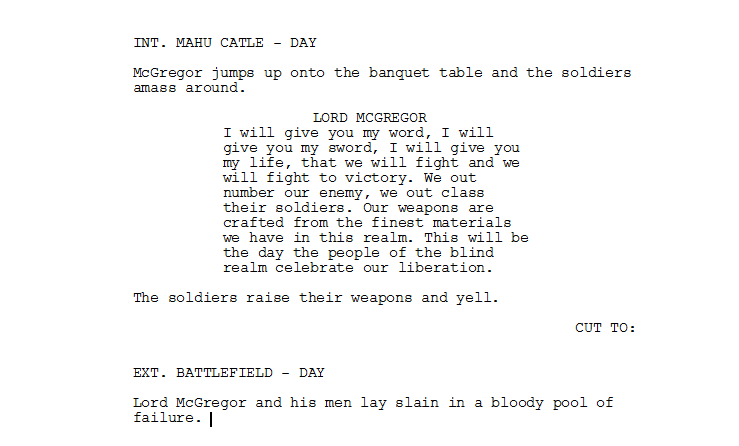Tips & Tricks - Get More out of Wipster
If you're a new user of Wipster or have just missed some of our recent updates, you might have missed some things:--Wipster's suite of integrations...
2 min read
![]() Wipster Content Team
:
Aug 28, 2020 10:07:00 PM
Wipster Content Team
:
Aug 28, 2020 10:07:00 PM
.jpeg)
Many screenwriting applications, such as Final Draft, will give the writer the option to add a transition to the end of the scene. CUT TO: is a transition that often appears as a default transition, you only have to hit TAB, and it appears as if the software is telling you to use this transition as anything else is wrong.
However, you shouldn't regularly use the Cut To transition for the end of each scene. Most writers use it sparingly, if not at all. But let's have a look at when this transition is put to good use. Good transitions should convey information, and if they are put to good use, the screenplay will read smoother.
Example One.

OR

The best transitions are the content-based ones. Why is that? It is because the transition can tell us a story without having to show us another 5 minutes of exposition scenes. We know that John did actually become a cop like he said he would, and we also know that the thug served a lengthy jail sentence. We can make assumptions based on intervening activity.
Well, when else is the CUT TO transition a good to use? Quite often in screenplays, we need to convey that a passage of time has passed. In the '50s & 60's a standard way of visually showing that time was passing was with a montage of shots dissolving into each other. A dissolve cut (also a transition that screenplay software supports) is often used to display a change of time or location. Quite often, filmmakers would dissolve multiple cuts to show a long period of passing. If we move into the latter half of the century, filmmakers started to cut a sequence against a calendar or a clock to convey a passage of time.
But we can do better. Using the notion that content-based cuts are better than regular cuts, let's have a look at what we can do.

We know he finished working on the car and Danny was gone at first light. We didn't need to see him fixing the car, we didn't need to see Danny leaving, but we knew all this took place because of an element included in the scene, in this case, the sound of the car. Let's break this down into bullet points to illustrate the point further.
Danny needs his car fixed
He needs it fixed by the morning
We see the dismantled car
We then cut to Joe lighting a cigarette with the morning light entering the garage
The car's engine echoes throughout the garage
Right here, we have a visual and auditory link to Danny's dialogue. The morning light and the now-working-car. Believe it or not, but our brains are smart enough to piece these bits of information together and work out that Joe has fixed the car. Joe then says, 'Goodbye Danny' for clarification.
This is in no way a rule you must follow; however, it allows us to omit a few useless shots and saves the production time. After all, time is money.
Nevertheless, you must clearly show the element that signifies the time change, whether it be visual or auditory, as it will leave them confused. Just look at the controversial scene from The Dark Knight Rises where Bruce Wayne is suddenly back in Gotham with no explanation on how he got there when he was near enough paralyzed halfway around the world. Maybe if we were shown a quick clip of Bruce activating a Bat-Pod, we would see less arguing across the internet.
Finally, we will look at the comic transition. This is where we juxtapose the current scene and cut to another displaying a stark opposite of the information that was given to us in the first. It's usually used for comedic effect even if the film isn't a comedy.

So there we have it, a few methods where the CUT TO: transition is put to good use.
Remember, writers use the CUT TO: transition sparingly; if your script looks like the following, it's not being used correctly.
If you're a new user of Wipster or have just missed some of our recent updates, you might have missed some things:--Wipster's suite of integrations...
We’re excited to announce a powerful new integration that brings Wipster’s intuitive video review tools directly into Final Cut Pro (FCP). Designed ...
1 min read